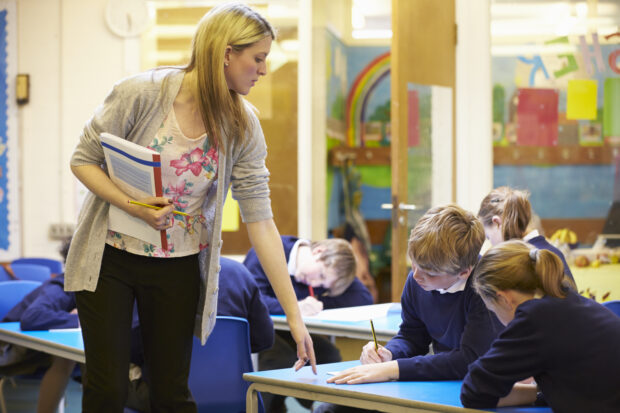
Mel Shute, headteacher of Trumpington Park Primary School in Cambridgeshire, shares her school’s journey on reducing workload by tackling a problem familiar to most workplaces – how to communicate effectively with each other.
At our school we identified that one of the biggest drivers of unnecessary workload was how we communicated and worked with each other. We had too many meetings, too many emails and too many long briefings.
We knew that something had to change to stop overloading our staff. We started off small and made increasingly bigger steps to overhaul how we communicate between ourselves and with parents.
So far, we feel workload has reduced and that we have much more positive relationships between school and home. Staff wellbeing has improved too as they feel more supported and that we are all using time more effectively.
Here are my top 10 tips, based on our experiences, to improve workload around communications:
1. Communicating with colleagues: think about it
Communication doesn’t always need to be written down in emails or briefings. Think about how you communicate with people outside of work and bring this into school - walk and talk, chat to someone while making coffee - make communication more personable.
2. Sharing resources
To avoid repetition, we have created areas where staff across our Trust from different teams can share resources and ideas. They can be used to access year group planning, assessments or objectives. For new teachers it gives them a clear understanding of how classes are run in each year group and answers questions like ‘what does homework look like?’ and ‘how do we teach spelling?’
3. Use emails wisely
Make sure everyone has a very clear, shared understanding around email use in your school. It may be helpful to create a short communication policy. If something needs to be sent in an email, keep it brief and only send to relevant people – not all staff - and be clear around when to expect a response. Our rules are:
- Emails should only be responded to during the day (if teachers want to respond after 5:30pm, it’s their choice)
- Teachers shouldn’t be on emails in the classroom - teaching is always the priority
- Parents and staff do not have access to each other’s email addresses. All parent communication goes through the office (which is open 8:15 to 4:00) and is addressed FAO
4. Make time for face-to-face
In our staff induction packs, we say to new staff “if you can discuss it face-to-face then this is the communication tool to use”. We have built in more productive staff briefings where information can be passed on openly and easily. This has cut down emails and had a positive impact on wellbeing as staff spend more time with each other.
5. Brief briefings
Arrange regular, short briefings to share key dates and information. Keep a tight schedule for these briefings with Any Other Business items agreed beforehand and have a clear start and end time. For key weekly messages, share these on a board where everyone can see it.
6. Utilise Senior Leadership Team
Use senior leaders to pass on key information to teachers in person. This means you can rely on a core group and avoid long briefings with all staff. At times, it is much easier for senior leaders to go around their teams and they can then field any questions. We have found this helps everyone feel in the loop and makes communication clearer.
7. Share good news with parents on social media
Sharing a school’s good news on social media is quicker than sending out letters. Parents also engage very positively with social media. It is lovely to look back through celebratory updates through the year and see how much has been achieved at school.
8. Early parental engagement
Suggest that teachers see parents early in the year, especially if there may have been issues from the previous year. This way positive collaborative relationships can be established which limits the need for numerous meetings through the year. We set up these meetings around 20 minutes before the end of the school day so that the teacher can be released by a Higher Level Teaching Assistant. This also gives a clear ending point for the meeting i.e. pick up time.
9. Gate chat
To enable our children and staff to have a great start to the day, parents from all year groups do not come into classrooms and have no access to staff. Instead we have a member of staff posted on the school gates who can pass on any messages. This means staff can concentrate on greeting each child and starting the day quickly and positively. At the end of the day, parents can see all staff so any one-to-one conversations can happen then.
10. Positive Parents
Ensure that parents are seen as an asset to the school and spend time sharing great things. For example, open doors 10 minutes early at the end of the day every so often so that children can share work with parents or arrange book breakfasts (great for when you have a book sale). Look for opportunities to bring in the expertise of your parent body to build community links.
Workload reduction toolkit
For more tips from senior leaders on how to reduce workload download ‘Tips for School Leaders’. The workload reduction toolkit provides practical advice and tools for school leaders and teachers to help review and reduce workload.
Want to receive blog posts in your inbox?